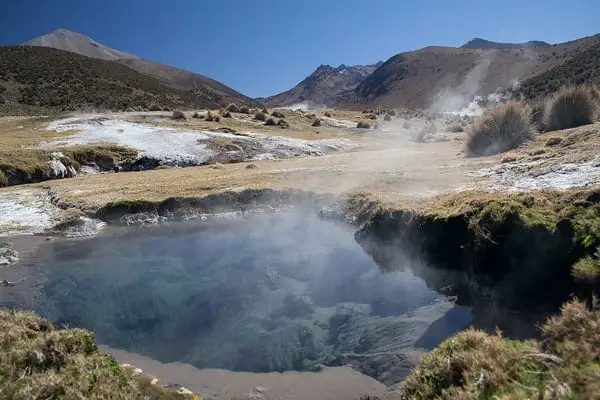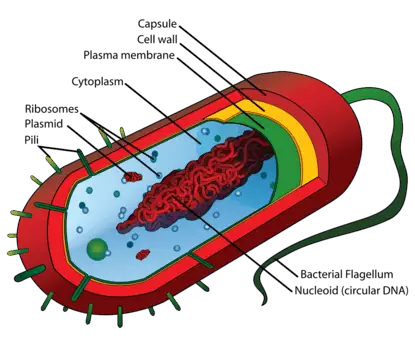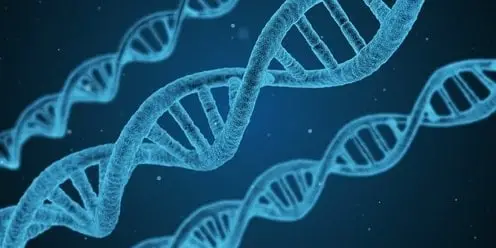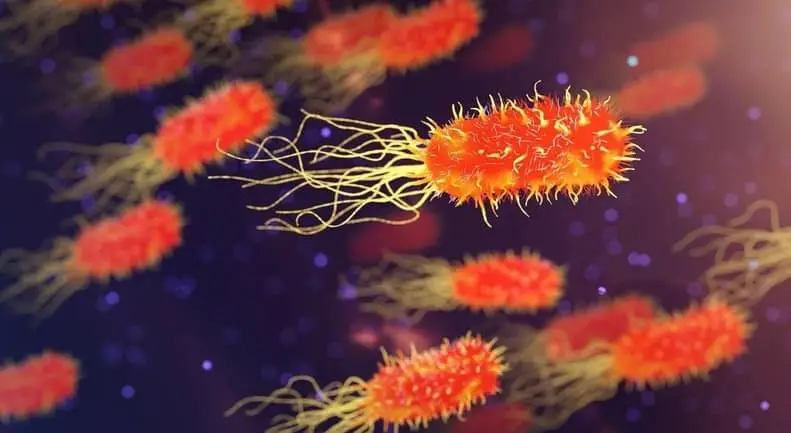For all the complicated life that exists, it is pretty unbelievable that biologists can sort them into one of two groups. This division is based upon stark differences of the fundamental building blocks of living organisms: the cell. Cells have multiple components, each of which play a distinct role for the cell. These components are called organelles. Inside all cells in all living beings, a membrane either does or does not hold these organelles.
Prokaryotes unicellular organisms that do not have a clearly delineated nucleus and lack any sort of membrane enclosed organelles. Prokaryotes range in size from 0.3 micrometer to 10 micrometers long and reproduce asexually through binary fission. Typical examples of prokaryotes include Spirochaete bacteria, Cyanobacteria, and Proteobacteria.
All cells are one or the other type. In this article, we will explore prokaryotes, and what it means that their cells lack a defined cell nucleus and membrane-bound organelles.
History
Prokaryotes and eukaryotes were first defined by microbiologist Edouard Chatton who first made a distinction between prokaryote and eukaryote in 1925. However in the early 60’s microbiologists C.B van Niel and Roger Stainer are credited with defining a prokaryote by the feature of having nuclear material not surrounded by a membrane. Since then, the difference between Eukaryotes and Prokaryotes were mainstream in microbiology with C.B van Niel and Roger Stainer’s definition remaining the standard.
Bacteria are types of cells that most people have come into contact with either knowingly or unknowingly. Bacteria can be found in our body (like our stomach to aid in digestion), fermented foods (like cheese, pickles, yogurt), or in chemical processes and materials. Archaea, on the other hand, are much more rare. As the name might suggest, Archaea is thought to be the first type of “life” on earth, existing in very extreme environments like volcanic hot springs or near thermal vents at the bottom of the ocean.

Archaea can further be divided into some phyla (a subset of naming convention below “domain”). However, Archaea are rather hard to classify because they are difficult to isolate in a laboratory setting, so Archaea remain an active area of research. Archaea are generally regular in shape, being flat, squares, or cylindrically shaped. Bacteria makes up most Prokaryote’s species.
They are found everywhere on Earth and have many symbiotic (helpful) and parasitic (not helpful) relationships with other organisms. Bacteria has essentially helped all other life on Earth succeed, as they help animals process vitamins and other nutrients. There are many subsets of bacteria, with many grown in a laboratory or found naturally. They can range from a wide range of shapes, colors and different morphologies.
Organelles in Prokaryotes
Prokaryotes lack a many organelles and structures that are present in Eukaryotes. The organelles prokaryotes do have are not bounded by membrane and are more “free-floating” throughout the interior of the cell. They are often much more simple and smaller than eukaryotes.
So what DO prokaryotes have?
- Cell Wall – Prokaryotes still have a definitive barrier separating the inside from the outside of the cell.
- Nucleoid – The general region within the cell where genetic material is stored. Note that this is not a defined structure like the nucleus, but rather an area where genetic information is kept.
- Plasmid – The small molecule of DNA which is independent of the rest of the cell. This can reproduce by itself.
- Cytoplasm – Pretty much everything inside the cell that isn’t the plasmid and nucleoid.
- Flagella – Filaments and structures made of protein which are attached to the outside of the cell.

Prokaryote Functions, Reproduction, and Life
Prokaryotes are unicellular organisms – they only act as one unit. This means that prokaryotes can reproduce asexually, without another prokaryote to split genetic information. But just because they are unicellular, doesn’t mean that they do not form communities with other prokaryotes of the same species. Many kinds of bacteria and archaea form communities called “biofilms”, where they can potentially create complex structures and colonies.
Within the cell, there are ribosomes which is the source of protein for the cell. As seen in a lot of pop-culture, these kinds of unicellular organisms have that long flagellum that helps in moving the cells around the environment they are in.
Because prokaryotes are much smaller and less complicated than other cells, they can duplicate and grow very quickly. This is what can lead to a huge number of bacteria in a very small amount of time. This is why you shouldn’t leave food out on the counter for a long time – as bacteria can grow very quickly, form a biofilm that can make you sick.
For reproduction, Prokaryotes have a very simple DNA structure. They reproduce asexually from a process called binary fission which is dependent on a particular protein called the FtsZ protein. This is what you have seen in a biology 101 textbook or video where a single cell grows larger and splits up into two smaller “daughter cells”. There are three steps to this process:
- DNA replication of the prokaryote’s DNA.
- The cell membrane grows between this new DNA and the old DNA until it doubles in size.
- A cell wall grows and “pinches” this doubled-in-size cell into two.
Evolution of Prokaryotes
As mentioned earlier, Prokaryotes can survive in extreme environments. That is why the current consensus believes that prokaryotes where among one of the first living organisms on Earth. Early earth was a violent, chemically-dangerous place due to volcanic activity and lack of a safe atmosphere.
This type of environment was too rough for eukaryotes because photosynthesis and organic compounds where not available for energy. Prokaryotes, however, could obtain energy from many different types of sources. The best example is hydrothermal vents in the ocean, where hydrogen sulfide was used as an energy source for these organisms. Prokaryotic fossils were found only 1 billion years after the Earth’s crust was formed. Eukaryotes on the other hand weren’t found until 3 billion years after.
As the Earth slowly changed over time, Prokaryotes continued to grow in all environments on earth. They can be found in freezing Antarctica, land-based and underwater volcanic vents, and high salinity (very high salt) environments. They have also adapted to be symbiotic with many other organisms, such as humans. Foods like yogurt are good for our own health because they contain bacteria which helps us digest foods better!
Key Features of Prokaryotes
DNA and Nucleus
As mentioned before, prokaryotes do not have a defined nucleus. They have a plasmid, which houses the DNA which is necessary for prokaryote reproduction. The DNA of prokaryotes are actually significantly different from eukaryote DNA, despite both having the same function. Prokaryote DNA is double-stranded, and linear.
Usually we picture DNA as circular (which Eukaryotes have). But because of the size and quick replication that prokaryotes favor, their DNA is linear so that it can unwind and be “copied” quicker.

Size
Because Prokaryotes are much simpler in structure, they are often very small. Prokaryotes are usually 0.3 – 10 micrometers in size – the size of human hair is usually 100 micrometers so nearly 33 prokaryotes can fit on the diameter of your hair!
Energy
An important characteristic of Prokaryotes is its energy and protein sources. Protein – on the molecular scale – is created by macromolecular machines called Ribosomes. These machines take amino acids (building blocks of proteins), and follow instructions sent by RNA (literally a sequence of instructions) to create large proteins.
Ribosomes can be built up of smaller sub-units. For Prokaryotes, they have 70S ribosomes, which are built from 30S and 50S subunits. This forms the basis for the statement that prokaryotes are simpler than eukaryotes. They have and need less rigorous “protein machines”. Less energy to make proteins is also why prokaryotes have a high metabolic rate. Metabolic, as in, it doesn’t need as much energy to keep reproducing and live in its environment.
The efficiency of these organisms has most likely contributed to their evolutionary success over millions of years. So how do Prokaryotes get energy? There are two ways to group prokaryotes in terms of nutritional needs, either carbon metabolism or energy metabolism.
For prokaryotes that have a carbon metabolism (i.e. use carbon for building their internal structures), they either use external organic compounds or CO2 (carbon dioxide) for energy.
For Prokaryotes that have an energy metabolism, they are phototrophic and use light energy (like solar panels!) for chemical energy, or they are chemotropic where they break down organic/inorganic molecules for energy.
Takeaways
All living organisms are built upon one or two different kind of cells: prokaryotes and eukaryotes. Prokaryotes are cells that lack any kind of organized, membrane-encased structures within the cell. They are much smaller and simpler in structure than eukaryotes, as they lack a lot of the complicated organelles that eukaryotes have.
Prokaryotes are divided into two main classifications: Bacteria and Archaea. Archaea are thought to be one of the first living organisms on Earth, as they could successfully live in the harsh environments of early Earth. Bacteria are found everywhere on Earth and are the source of a lot of diseases AND benefits for other larger animals, including humans.
References
- http://www.nature.com/scitable/topicpage/beyond-prokaryotes-and-eukaryotes-planctomycetes-and-cell-14158971
- https://doi.org/10.1126%2Fscience.325_666
- https://www.nature.com/articles/nrm1745
- https://www.jstor.org/stable/1686836?seq=1
- https://www.sciencedirect.com/science/article/abs/pii/0022519367900793
- https://www.sciencedirect.com/science/article/abs/pii/S0074769608608463



